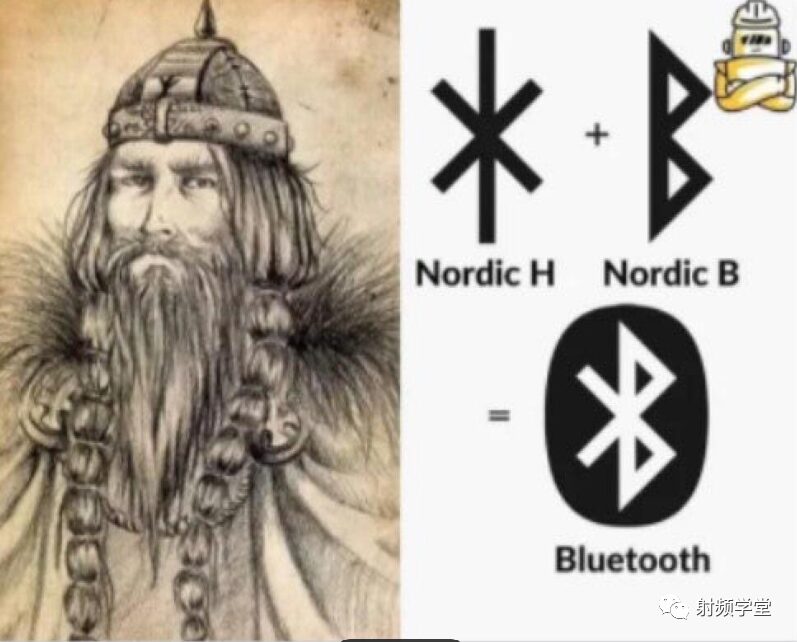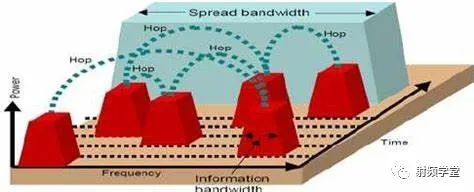Once upon a time, people dreamed of owning a mobile phone with Bluetooth functionality. Now, Bluetooth has reached every household, with almost all smartphones featuring Bluetooth capabilities. Bluetooth headsets, keyboards, mice, and speakers have become commonplace; any electronic device lacking Bluetooth functionality feels outdated. So, what exactly is Bluetooth? Why is this wireless technology called “Bluetooth”? Today, the RF School will explore this topic.

The Origin Of Bluetooth
The development of wireless technology aims to meet the endless demand for wireless connectivity, and Bluetooth technology is no exception. In 1994, Ericsson established a special research group tasked with developing a low-power, low-cost wireless connection technology for devices like wireless phones and headsets. As research progressed, scientists increasingly recognized the significant commercial potential of this technology. Similar to today’s mobile communication technologies, it is challenging for a single company to promote it alone. Hence, Ericsson’s researchers announced the technology and gathered a group from five multinational telecommunications companies—besides Sweden’s Ericsson, there was Finland’s Nokia, America’s IBM and Intel, and Japan’s Toshiba. Anyone in the electronics field could see that this group was extraordinary. The giants of mobile communication—Ericsson and Nokia, the titans of computing—IBM and Intel, and the technological prowess of Japan in the 80s and 90s were all represented. This group named themselves SIG, which stands for Special Interest Group, and their mission was to develop Bluetooth, essentially establishing a global short-range communication technology.

This special interest group developed rapidly, growing from five founding members in 1998 to over 2000 by 2000. In fact, in 1999, the world’s richest man, Bill Gates, visited a small workshop in Las Vegas that produced Bluetooth badges and subsequently, Microsoft joined this group. Almost all electronic device companies are now part of this special group. Interested readers can check if their company is a member.
The success of Bluetooth technology is undoubtedly immense, but why is this unique wireless technology, developed by the SIG, called Bluetooth? Wouldn’t “White Tooth” sound better? Does this wireless technology tightly bind like a blue tooth, or is it just a matter of poor aesthetic judgment from foreigners?

This “Bluetooth” name was not conjured up from the rich imagination of foreigners; it was named to commemorate a great ancient king—Harald Blåtand. In English, Blåtand translates to Bluetooth. This king was fond of eating blueberries and did not care for dental hygiene, resulting in blue teeth. Hence, he was humorously referred to as King Blurtooth. Luckily, he didn’t eat strawberries; otherwise, it would have been Red Tooth King, and every time he spoke, it would be like chewing raw meat. This king’s greatest contribution was unifying ancient Denmark, Sweden, and Norway, and he introduced Christianity in the era of Viking piracy, gradually ending the Viking Age. Thus, this Bluetooth king ranks 63rd among the 100 most influential emperors in history. Moreover, this Bluetooth king was articulate and skilled in communication, uniting Norway, Sweden, and Denmark during his lifetime, mirroring the original intent of forming the special interest group. Therefore, this wireless technology was named: Bluetooth. The initials of Harald Blåtand were designed into the Bluetooth logo.

The Development Of Bluetooth Technology
From the launch of the first generation of Bluetooth technology in 1998 to the present, it has developed through five generations, ushering Bluetooth technology into the 5G era. As shown in the diagram below, the main features include increasingly faster transmission rates and longer transmission distances. Of course, there have been minor version upgrades between each generation, such as Bluetooth 1.1 and Bluetooth 1.2 released in 2002 and 2003, respectively, increasing transmission rates from the initial 723Kb/s to 1Mb/s. This progress is largely due to the hard work of engineers, alongside the significant contributions from RF engineers.

Bluetooth technology development timeline
Below is a timeline of Bluetooth’s development for easier understanding of this technology. The latest release is likely Bluetooth audio technology—Bluetooth Audio. The demand is endless, and technological development knows no bounds. I believe the future of Bluetooth technology will only grow stronger.

Characteristics Of Bluetooth Technology
As a standard wireless communication system, Bluetooth has its own unique communication protocol—the Bluetooth protocol, which is formulated and published by its standard group, SIG. The diagram below illustrates the structure of the Bluetooth protocol, including the application layer, data layer, logical link control and adaptation protocol, HCI host controller interface, LMP link management, and the baseband and RF parts familiar to us RF engineers.

Bluetooth operates in the most familiar ISM band, specifically at 2.4GHz, with a bandwidth of 83.5MHz, ranging from 2.4GHz to 2.4835GHz, sharing this band with commonly used Wi-Fi. How does it handle interference between them? Bluetooth employs Frequency-Hopping Spread Spectrum (FHSS) technology, which divides the frequency band into 79 frequency-hopping channels spaced 1MHz apart. Bluetooth device signals pseudo-randomly hop from one channel to another. On the surface, Bluetooth occupies the entire ISM band, but in reality, only about 1MHz of the band is occupied, with a hopping rate of 1600 hops per second.

Additionally, to avoid potential interference, the standard organization proposed the wireless personal area network standard IEEE802.15 based on the Bluetooth protocol to address the coexistence issue between Bluetooth and Wi-Fi.
That’s all for today. For more content, please follow 【RF School】 to read more.
References